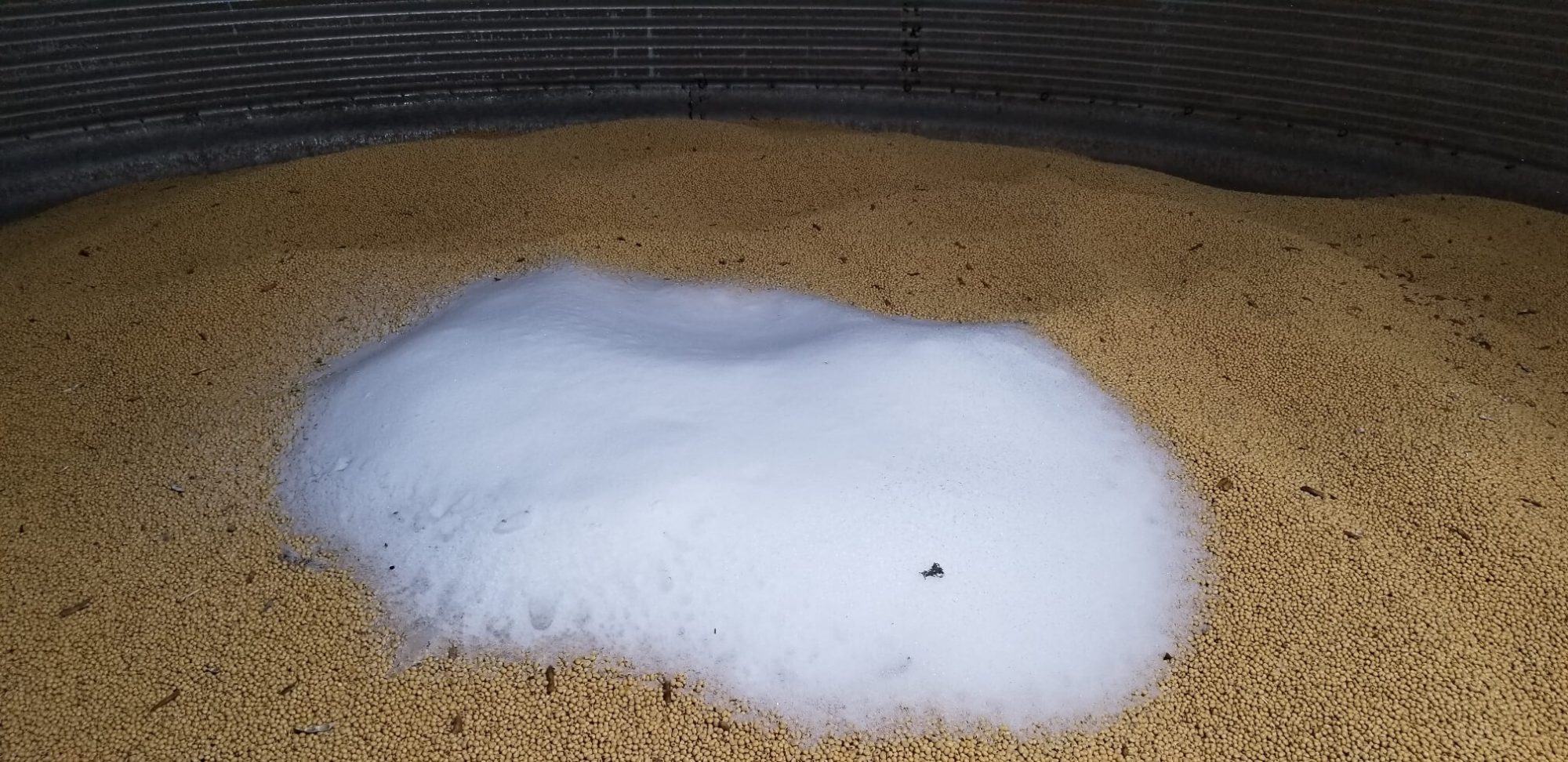With spring weather that swings between snow flurries and blazing sun, stored grain is particularly vulnerable to the weather conditions. While the hatch doors are essential for ventilating the grain, they can also be an entry point for snow during big storms. A crop intended for human consumption that is not checked on a monthly basis—especially in spring—may be downgraded when it is received according to the Official Grain Grading Guide by the Canadian Grain Commission
Below are the best practices to follow each month to prevent unforeseen problems:
Do a visual and olfactory inspection
Climb the ladder, lift the silo cover and inspect the grain’s appearance. You can identify water leaks by the colour of the grain as it will be much darker, having turned from white or pale beige to brown. A rancid odour is another sign of a water leak. Remember that there may be a barely perceptible tower of mould running down from the surface, as you are only seeing the tip of the iceberg.
React quickly to major shifts in weather
When the weather is still cold, it is easy to detect any snow that has entered the silo. The snow can easily be removed with a shovel before it causes damage. However, when the weather warms up, the snow will melt, causing the damp grain to expand and mould. Heavy rains create the same problem, especially in combination with high winds. When this occurs, you must turn the bulk in the silo to ventilate the grains and allow the moisture to evaporate. This is why it’s important to inspect the silos after all weather events, like the last of the April showers, for example.

Control the moisture content
Soybeans keep well at 14% moisture or less. A moisture content exceeding 15% will make the crop susceptible to mould, and the risk of losing your crop increases exponentially with each additional percent.
Remove the affected grain
If you find mould and suspect that it has been there for a certain time, you must remove the affected grain to try and save the crop.
Flatten the cone
In fall, it is important to flatten the grain mass to minimize the accumulation of moisture that can lead to rancidity or mouldy grains. This is a crucial step!
It goes without saying that you need to closely monitor your grain throughout the year, but spring is particularly important for ensuring you get the best possible quality!
